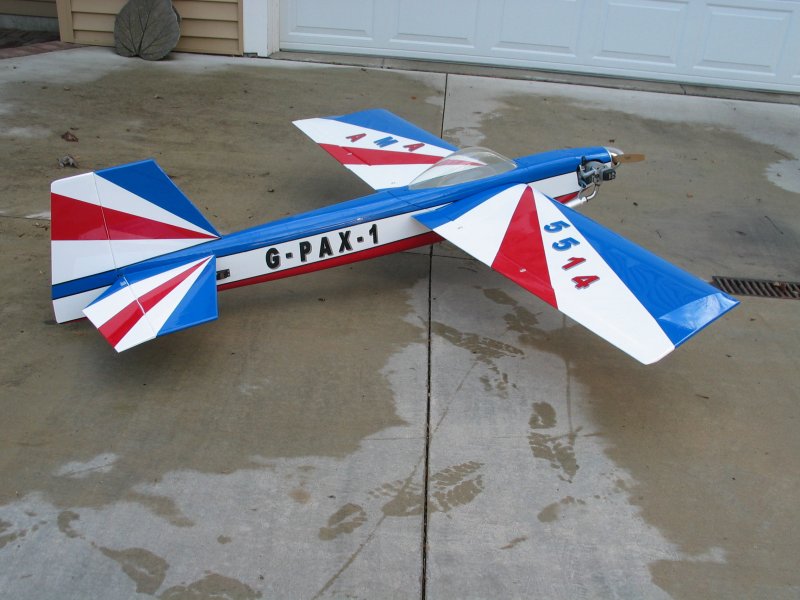|
This document contains the history, as well as a gallery, fixes and the build procedures
and modifications to electric power for a Skip Gram
G-Styk R/C Model Airplane. Skip has been a close friend and great mentor when it comes
building and flying and his designs have been so inovative, they have been copied by
manufacturers, and there is at least one G-Styk across the pond. His G-Styk is the anchor model
of his line and I am priveleged
to own a couple of them. In this segment, we will discuss the model and show how to convert it to
one of the first if not the first electric G-Styks, hopefully with the characteristics and
performance that compliment the glow model version.
|
 The latest version of the G-PAX, this is Skip's personal airplane |
|
The new model has also been constructed with stronger wood where needed, with ply supports
strategically placed to enhance the strength of the model. The wing has also improved, using
wider caps on each rib and a solid wood dowel across the rear for control surface mounting.
The latest G-Styk is the culmination of years of design and it has paid off; this is an
airplane everyone should have in their hangar! MY plan is to make it better by going "green"
and using an electric power plant. Just think, a G-Styk you never have to clean, doesn't
require fuel proofing, hence saving weight and will not stain, but rather maintain that "like
new" appearance. I would call that "better", however, I am sure Skip would disagree. ;o)
|

This Website and all documents herin are Copyright © 2012 www.scalerocketry.com - All rights reserved.
|

